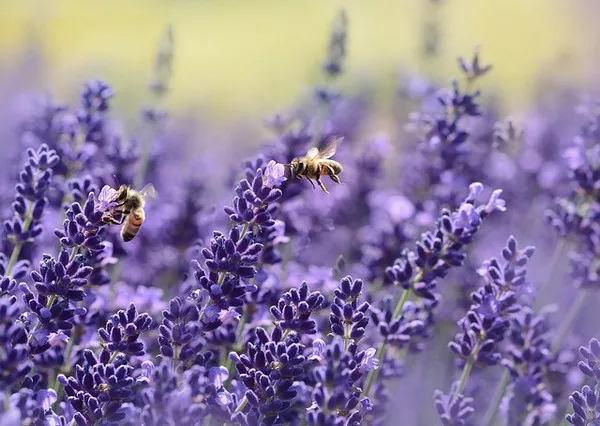Woodchucks, also known as groundhogs, are notorious garden pests known for their voracious appetite for vegetation. Gardeners often find their carefully cultivated flower beds decimated by these furry intruders. However, there are certain flowers that woodchucks tend to avoid, providing gardeners with options to protect their gardens while still enjoying a colorful display of blooms. In this comprehensive guide, we delve into the world of flowers that woodchucks don’t eat, offering insights and recommendations for creating woodchuck-resistant gardens.
Understanding Woodchuck Behavior and Dietary Preferences
Before delving into specific flower varieties, it’s important to understand the behavior and dietary preferences of woodchucks. Woodchucks are herbivores, primarily feeding on a variety of plants, including grasses, clover, vegetables, and flowers. Their diet varies depending on factors such as availability and personal preference, but they generally have a preference for tender, succulent vegetation.
Woodchucks are opportunistic feeders and will readily consume plants within their reach. They are known for their ability to climb, dig, and squeeze through small openings, making it challenging to deter them from garden areas. However, certain flowers contain compounds or characteristics that make them less palatable to woodchucks, offering gardeners an advantage in protecting their gardens.
Flowers That Woodchucks Avoid
While no flower is completely immune to woodchuck browsing, there are several varieties that woodchucks tend to avoid due to their taste, scent, or toxicity. Incorporating these flowers into your garden can help deter woodchucks and minimize damage. Here are some examples:
Daffodils (Narcissus spp.): Daffodils are known for their bright yellow, trumpet-shaped blooms and are a popular choice for spring gardens. They contain toxic alkaloids, such as lycorine, which deter woodchucks and other herbivores. Planting daffodils around the perimeter of your garden can help discourage woodchucks from entering.
Alliums (Allium spp.): Alliums, which include onions, garlic, and ornamental varieties such as ornamental onions and chives, have a pungent odor and a strong flavor that woodchucks find unappealing. Planting alliums interspersed throughout your garden can help repel woodchucks while adding architectural interest and culinary potential.
Lavender (Lavandula spp.): Lavender is prized for its fragrant foliage and aromatic flowers, which have a strong scent that repels woodchucks and other pests. Planting lavender along garden borders or near vulnerable plants can help deter woodchucks while attracting beneficial pollinators such as bees and butterflies.
Marigolds (Tagetes spp.): Marigolds are renowned for their vibrant colors and strong scent, which deters woodchucks and other garden pests. Planting marigolds as a border around your garden or interspersed among susceptible plants can help protect them from woodchuck damage.
Siberian Irises (Iris sibirica): Siberian irises are known for their elegant, sword-shaped foliage and delicate blooms in shades of blue, purple, and white. While not toxic to woodchucks, the fibrous texture of their foliage makes them less palatable, deterring browsing. Planting Siberian irises in woodchuck-prone areas can help safeguard your garden.
Bleeding Heart (Dicentra spp.): Bleeding heart is a shade-loving perennial prized for its distinctive heart-shaped flowers and graceful foliage. While not immune to woodchuck browsing, its toxicity and bitter taste make it less appealing to these herbivores. Planting bleeding hearts in woodland gardens or shady areas can help deter woodchucks.
Foxglove (Digitalis spp.): Foxglove is a tall, stately biennial or perennial with spikes of tubular flowers in shades of pink, purple, white, and yellow. It contains cardiac glycosides, which are highly toxic to humans and animals if ingested in large quantities. While not immune to woodchuck browsing, the toxicity of foxglove makes it less appealing as a food source.
Creating a Woodchuck-Resistant Garden
In addition to incorporating woodchuck-resistant flowers into your garden, there are several strategies you can employ to deter woodchucks and protect your plants:
Fencing: Installing a sturdy fence around your garden can help prevent woodchucks from accessing your plants. Opt for fences with buried wire mesh to deter burrowing, and make sure the fence is tall enough to prevent woodchucks from climbing over.
Repellents: Commercial repellents containing natural ingredients such as capsaicin, garlic, or predator urine can help deter woodchucks from entering your garden. Apply repellents according to the manufacturer’s instructions and reapply after rain.
Companion Planting: Interplanting woodchuck-resistant flowers with susceptible plants can help camouflage them and make them less attractive to woodchucks. Additionally, certain companion plants, such as aromatic herbs like rosemary and thyme, can help repel woodchucks and other pests.
Habitat Modification: Removing brush piles, rock piles, and other potential woodchuck habitats from your garden can help discourage woodchucks from taking up residence. Keep grass and vegetation trimmed short to reduce cover and make your garden less inviting to woodchucks.
Trapping and Removal: In cases of severe woodchuck infestation, trapping and removal may be necessary. Live traps baited with fruits or vegetables can be used to capture woodchucks, which can then be released in suitable habitat away from your garden.
Conclusion
While woodchucks can pose a challenge to gardeners, there are several flowers and strategies that can help mitigate woodchuck damage and protect your plants. By incorporating woodchuck-resistant flowers into your garden, implementing deterrents such as fencing and repellents, and employing habitat modification techniques, you can create a beautiful and thriving garden that is less susceptible to woodchuck browsing. Experiment with different flower varieties and strategies to find the combination that works best for your garden and enjoy a bountiful harvest of blooms for years to come.


